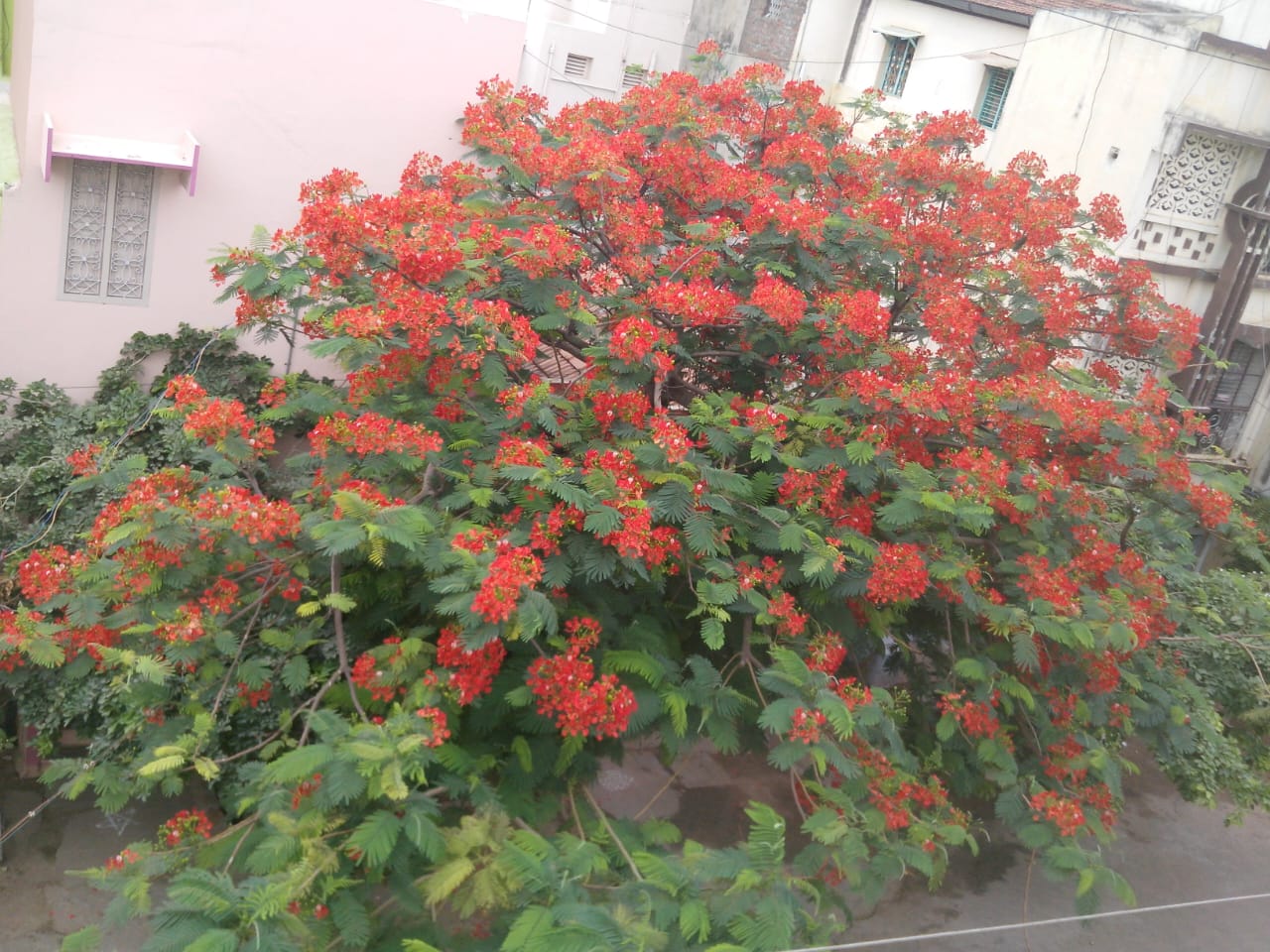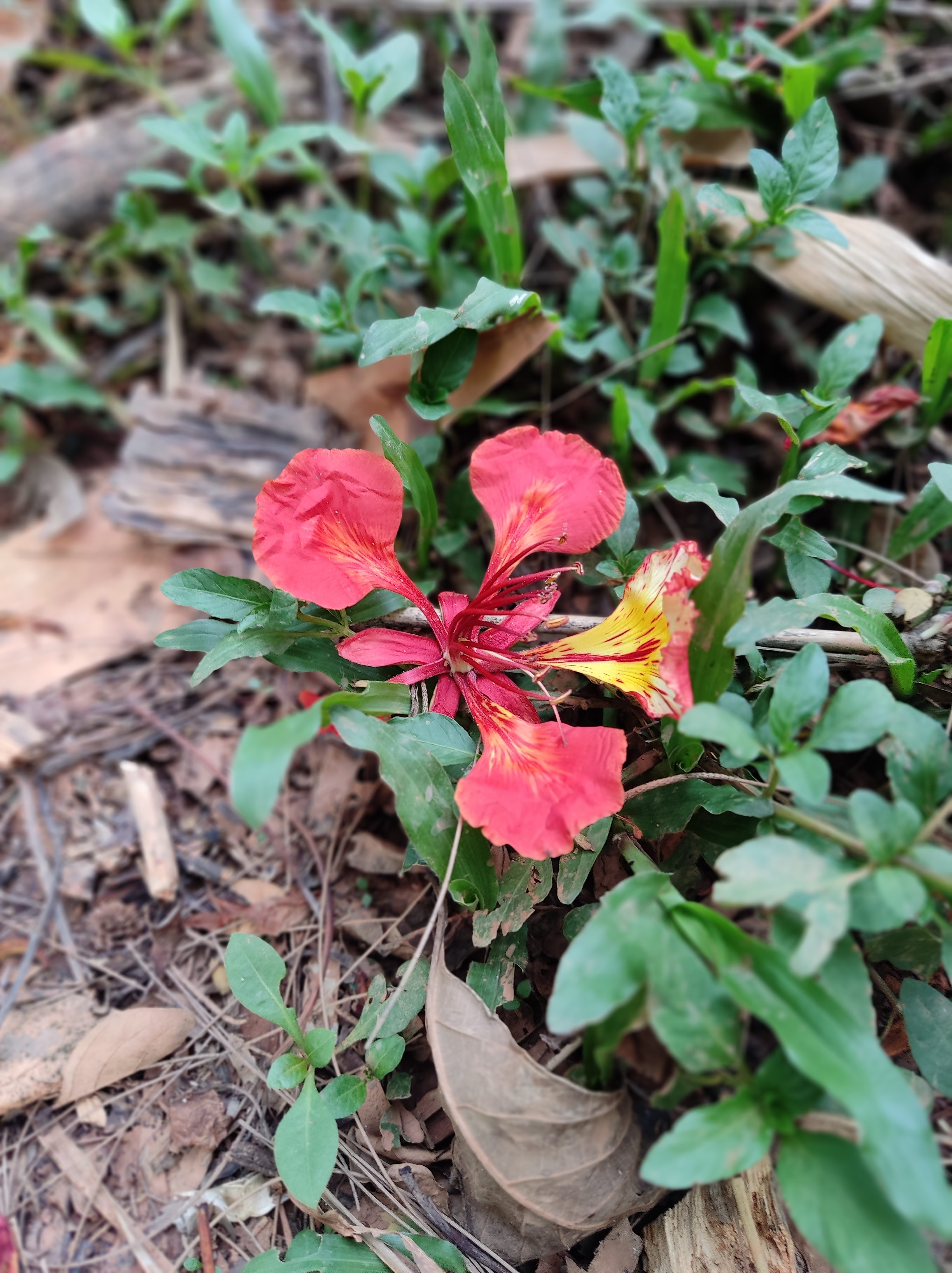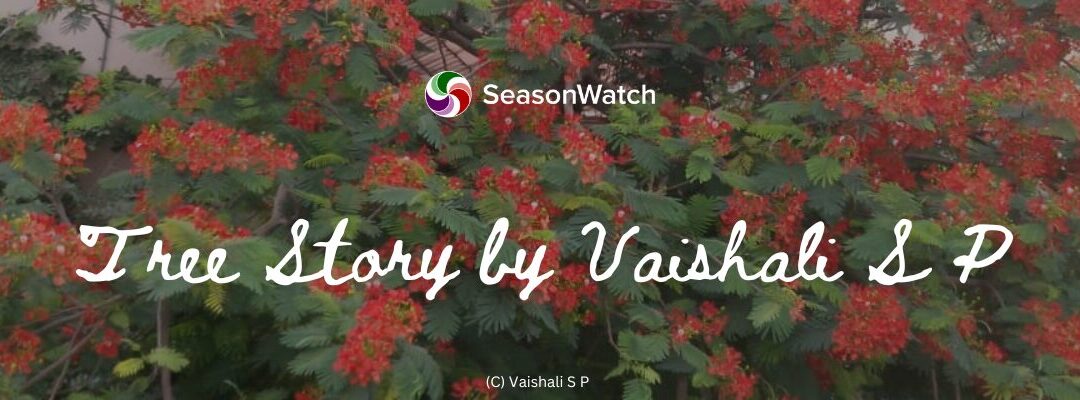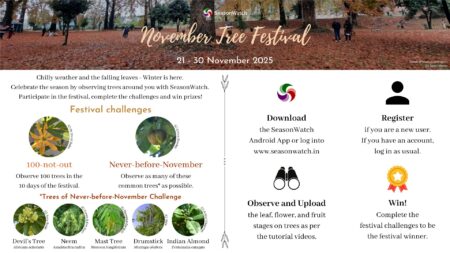My parents and I planted a little Gulmohar sapling in front of our house when I was three years old. The story has been told so often that it’s part of me now, even though I can’t recall the details — what I was wearing, whether I helped dig the pit, or just played with the mud. According to my mother, I insisted on using a small steel tumbler to water it every day. Sometimes I would even bring water from my school water bottle and pour it at its roots before stepping inside the house. The tree and I both grew over time. In a home where so much changed, Gulmohar was the quiet constant. Its thin branches grew into a wide canopy that gave the street a soft, patchy shade. It was the first thing we saw when we opened our front gate.
Summer was its season. As my school year ended, its vivid red-orange blossoms would appear. Somehow, its flowering always matched the rhythm of my childhood — the last day of exams, holiday plans, and the market filling up with mangoes. For me, the season of the Gulmohar meant freedom.

When I was little, I believed it bloomed just for me. I would wait for the first flowers to fall, then run outside to gather them. I tried to string them into garlands, though they never stayed together. One of my favourite things was placing the sepals on my nails and pretending I had the prettiest manicure in town. I would play with the sticky tree gum that oozed from the trunk. I was mesmerised by its long, boat-like seed pods too— I’d try to open them, hoping to find treasure or a secret message inside. Long before I had words for it, that tree stirred my curiosity and imagination.
The Gulmohar belonged to the street’s life too, not just mine. Crows, mynahs, and sometimes even parakeets perched in its branches. Squirrels raced up and down its trunk all afternoon. Postmen, vegetable vendors, and neighbours would pause in its shade. During power cuts, we’d pull chairs outside and sit beneath it to catch a bit of breeze. The tree gave quietly to everyone, though I didn’t realise that then.
At one point, the tree was cut back hard because its branches tangled with electric lines, and neighbours complained about the fallen leaves littering their yards. But it grew back, stubborn and graceful as ever. There was beauty in its silence, even when it stood bare for months. Early in spring, I’d notice tiny new leaves or the bright flowers pushing through the heat. Growing up, I understood that trees run on their own calendar. They know when to rest, wake, bloom, or shed — no reminders needed.
We moved out of that house years later. It was hard to leave, but saying goodbye to Gulmohar was the hardest part. Whenever I’m in that neighbourhood, I make sure to pass by. The tree is still there, taller now, its trunk thicker. It’s still the same tree. Every time I see a Gulmohar elsewhere, I’m reminded of that very tree. Memories flourish. Whenever I see one in bloom, I wonder if that old tree is flowering too. My mind drifts back and I can see it exactly as it was. When I stand there quietly, I think of a time when I didn’t know life would ever take me far from that street.
That one tree has stayed put in a world that changes so quickly. And maybe that’s what trees do for many of us: they tie us to memories, seasons, and the people we were when we stood beneath them. My Gulmohar may not know me, but I know it — and I like to think it holds the memory of the little girl with the steel tumbler who tried to water the sky. And after all these years, it’s still rooted where I left it.

All photos by Vaishali S P.
About the author: Vaishali SP tells quiet stories of trees, memories, and the places that remember us back.







Hello everyone! Although the Gulmohar undoubtedly steals the show, I’m Vaishali S P—the human in this story. Thanks for reading about how this little tree, my quiet companion, and I grew up together.
Would love to know if you’ve had a tree or plant buddy too — tell me in the comments!
Hmm… quiet a lot to learn from trees also… as humans are moving towards technology and advancements…